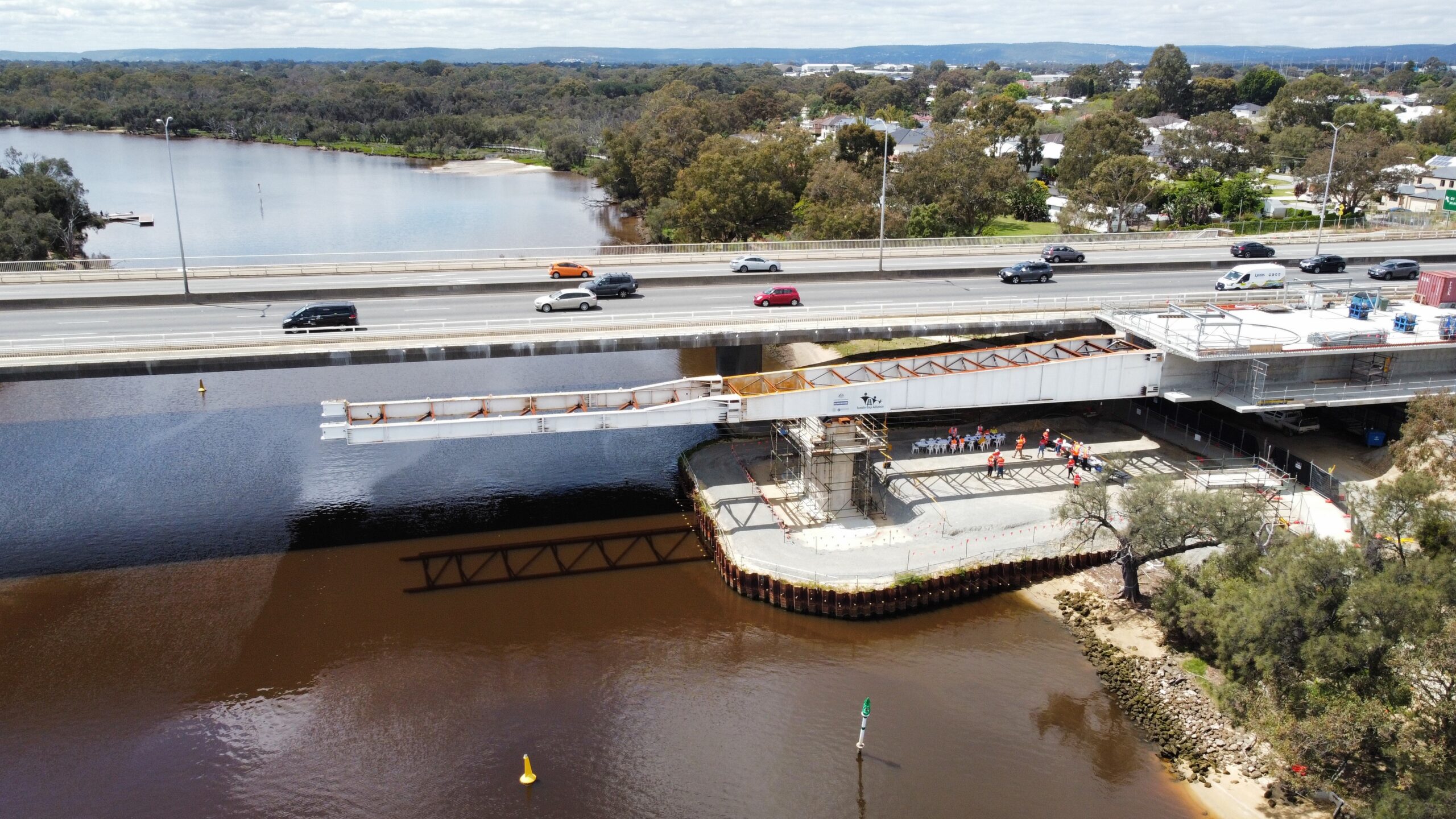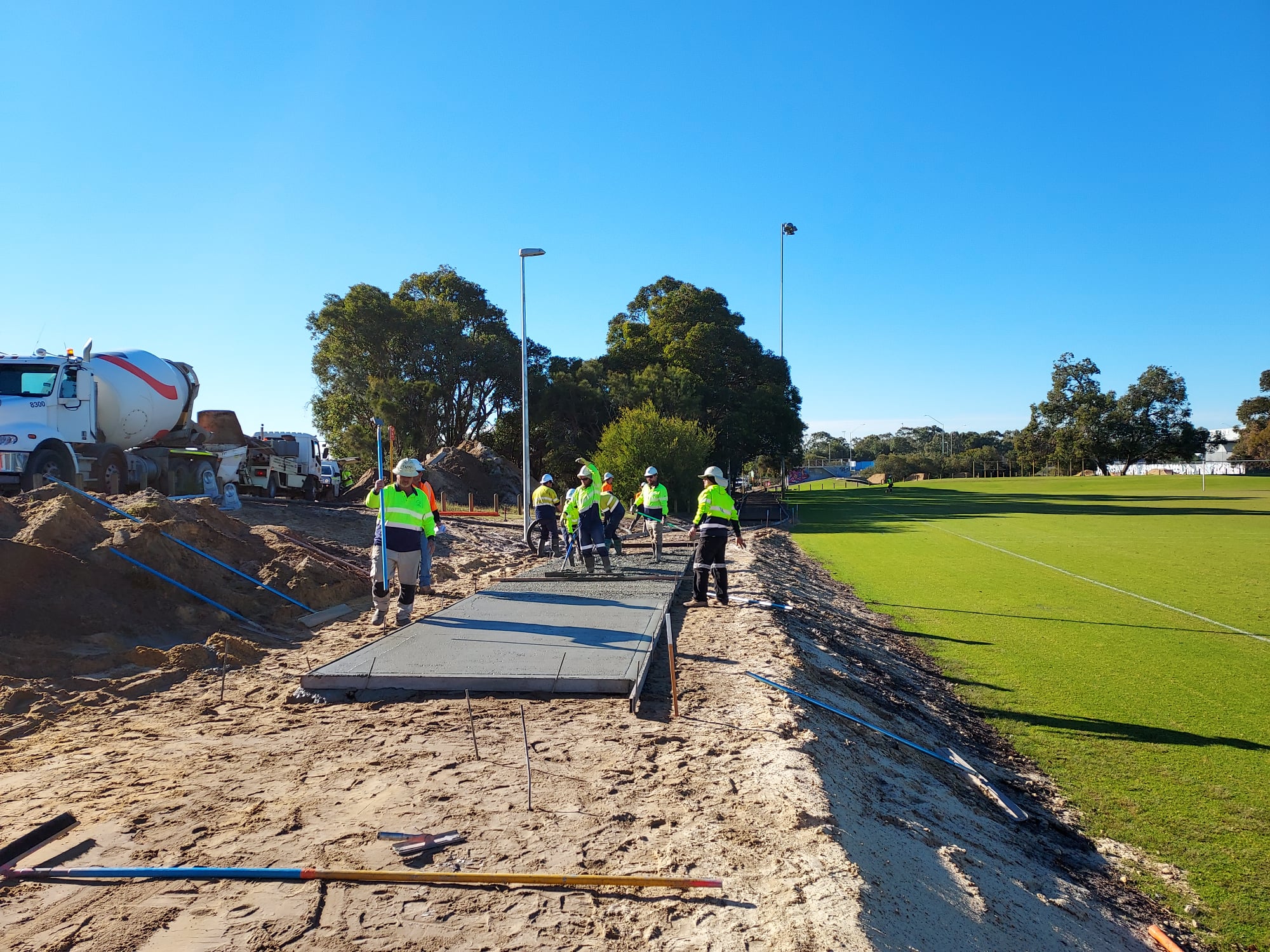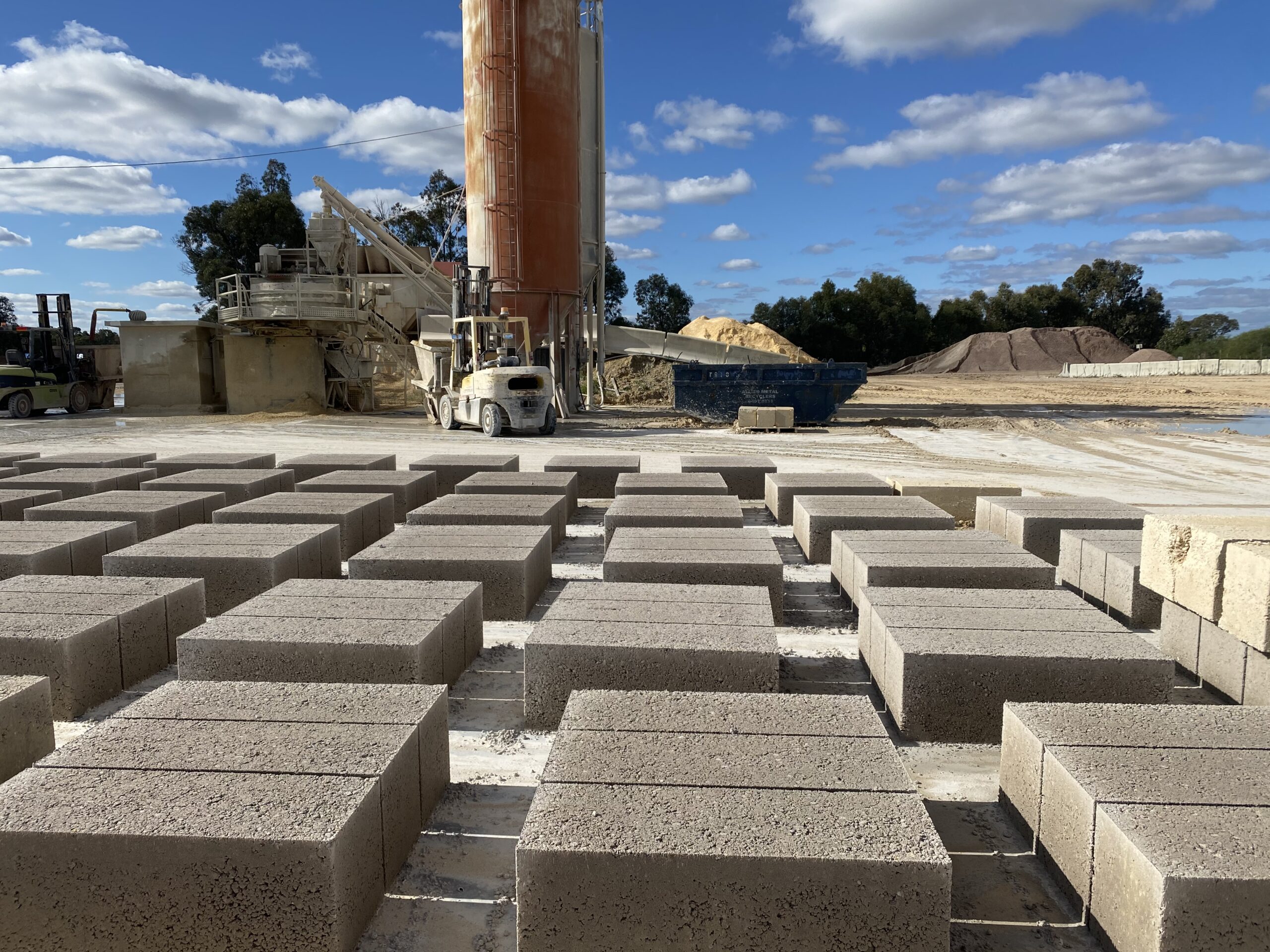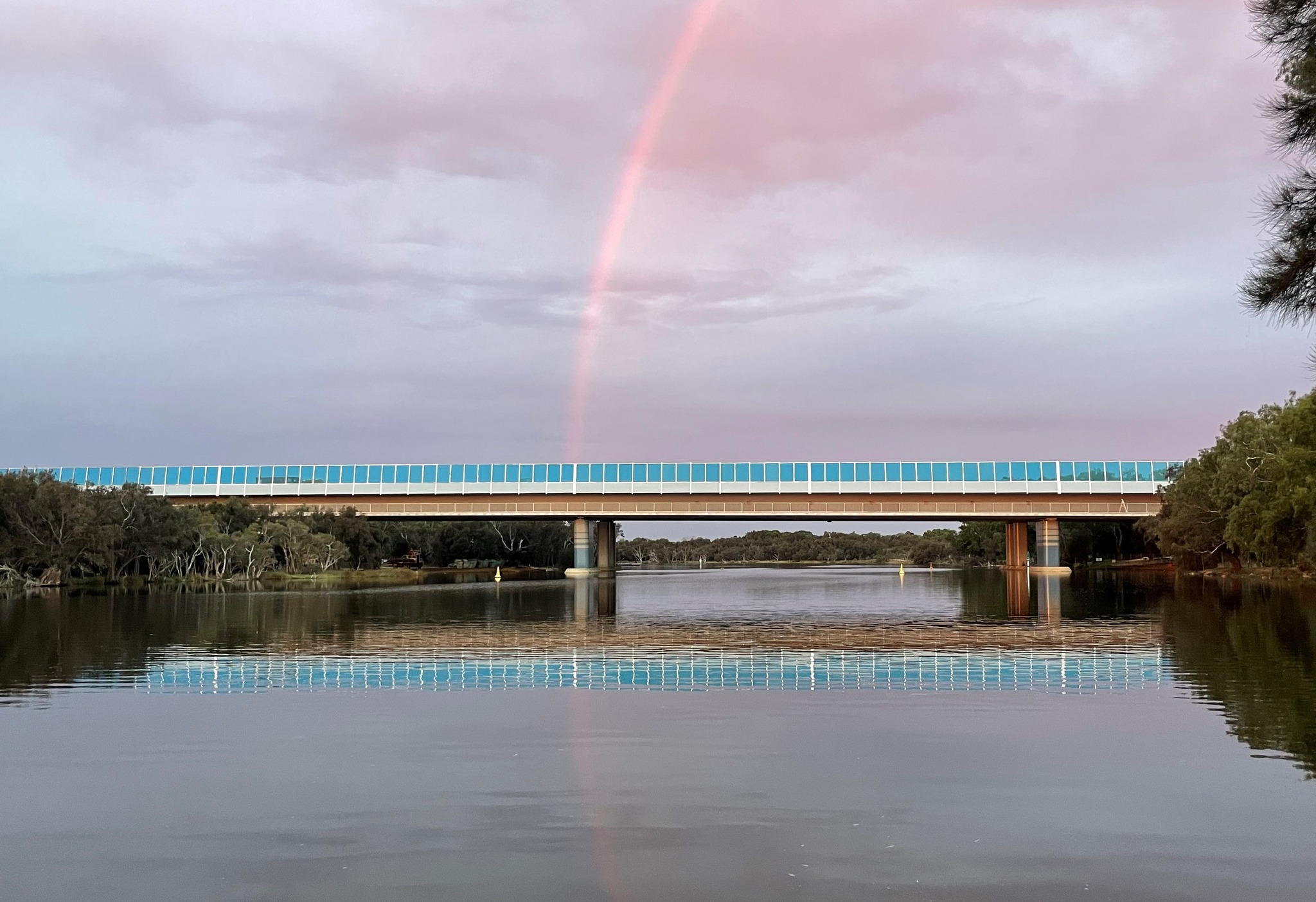Tonkin Gap Project and Associated Works – Governance Outcomes
Describe WHAT you have done and HOW you have done it.
The Tonkin Gap Alliance (TGA) comprised of Main Roads, Public Transport Authority (PTA), Georgiou, BMD, WA Limestone, BG&E and GHD, is upgrading Tonkin Highway in Western Australia with additional lanes, new interchanges, bridges and a shared path, as well as delivering enabling works for METRONET’s Morley-Ellenbrook Line. We are proud to submit our award application, highlighting our achievements in sustainability governance and our commitment to driving positive change in the construction industry.
Throughout the design and construction process, we recognised the significance of establishing a robust and integrated sustainability system and have maintained a focus on engaging the whole team, from management to on-site employees.
To increase the teams’ understanding of sustainability in construction, we launched the ‘Sustainability Essentials’ initiative. During toolbox presentations, our Sustainability Lead and Alliance Director introduced the six key essentials for construction: Integrated Decision Making, Sustainable Procurement, Energy Use, Material Use, Water Management and Waste Management. These were presented in a booklet shared with the team, promoting priorities for each topic and the expectation the wider team would contribute to sustainability success. Training was also rolled out with engineers, serving as a reminder of individual and team responsibilities, as well as introducing the IS rating tool and its broad requirements.
The key driver to our success has been the early set up of a governance structure and comprehensive Sustainability Strategy that has informed our approach. Through collaboration with a broad multi-disciplinary team of internal and external stakeholders, we identified priority sustainability issues and developed suitable focus areas and objectives. The focus areas closely align with the key result areas, (KRAs) established by the Alliance management team, which encompass wellness, quality, timeliness, sustainability and environment, cost, reputation, Aboriginal participation and industry sustainability.
Our Sustainability Strategy helped us establish governance processes that effectively manage both risks and opportunities. By integrating sustainability considerations into the decision-making procedures, we ensure that our actions, through design and construction, align with our commitment to sustainability outcomes and our priority issues.
Sustainable procurement practices have been prioritised and integrated into the commercial management system, with employees engaged in procurement processes and actively participating in the evaluation and assessment processes. To ensure our sub-contractors are aligned with our objectives, we have communicated our sustainability objective and KRAs through toolbox and other meetings, including incentives in some contracts to increase sustainable outcomes.
Our approach to sustainability was further enhanced by the Alliance contractual framework. As an Alliance, we worked together to surpass business-as-usual sustainability practices, fostering an approach to exceed expectations in sustainability performance. Our local focus has been instrumental in providing significant benefits to the Project, leveraging our understanding of the local context and allowing us to tailor our sustainability efforts to address specific industry challenges that have previously been seen in WA.
What were the OUTCOMES and how were those outcomes shared?
Our comprehensive and pragmatic Sustainability Strategy underpins the integration of governance processes and has contributed to specific outcomes across many objectives. With significant support from senior management, and across the wider team, we have successfully implemented an approach that addresses social, environmental and economic aspects, rather than chasing a singular achievement.
Our sustainability workshops were aimed at identifying risks and opportunities across the triple bottom line and were closely aligned with overarching our sustainability objectives.
As an early intervention strategy, we facilitated a workshop with key internal stakeholders and Main Roads representatives, including Project Management, Materials Engineering Branch and Asset Management. This collaborative effort enabled us to identify priority opportunities, particularly in materials trials and innovative approaches, and we successfully laid the foundation for achieving various resource efficiency outcomes.
Notable accomplishments include reuse of 612T of stone-pitching at Guildford Road and Railway Parade abutments, saving 5,600L diesel, repurposing approximately 20 light poles slated for removal and trial of lower carbon concrete mix, all which required acceptance from Main Roads representatives.
We developed an integrated decision-making tool that incorporated sustainability criteria and whole-of-life costing for design and construction. This framework was extensively applied during the design phase, assessing at least 25 value engineering initiatives, which enabled us to make significant reductions in diesel and material usage, while optimising outcomes for community and stakeholders.
A standout outcome resulting from our decision-making approach was one of our verified Australia First innovations, an incrementally launched bridge over the Derbarl Yerrigan (Swan River) with the longest girder ever used. By eliminating need for a temporary pier in the river, dredging was not required, and we avoided disturbance to sediment and minimised water quality impacts. This approach resulted in substantial savings, including 23kL of diesel and 25T of reinforcement steel, while minimising impacts to an important Aboriginal heritage site and reducing disruptions to recreational users during construction.
To help our team achieve sustainable outcomes, we established robust sustainable procurement processes. This included a vendor self-evaluation and procurement multi-criteria analysis, incorporating sustainability criteria such as environmental impact, resource use and waste, stakeholder and community impact, safety, quality and industry experience, and industry sustainability.
This evaluation tool enabled us to identify opportunities in consultation with subcontractors, in line with our sustainability objectives. Our commitment to sustainability was also effectively communicated to subcontractors and suppliers through the request for quote (RFQ) process. We conducted industry briefings with the Civil Contractors Federation and dedicated sessions for Aboriginal businesses, fostering early engagement and demonstrating our commitment to sustainable procurement practices.
Through active supplier engagement and partnerships, we successfully implemented two Australia First innovations. We leveraged off WA Limestone’s existing relationship with Avertas Energy and Covalent Lithium to trial two types of retaining wall blocks containing recycled construction and demolition waste, one supplemented with incinerator bottom ash aggregate (IBAA) from a waste-to-energy plant and the other with de-lithiated beta spodumene, from lithium processing. TGA shared the challenges and learnings from the trial at the ISC WA Symposium in 2023, providing a platform for the suppliers to share this opportunity and encourage wider industry adoption.
Fostering the relationship with Holcim led to a trial of their ECOPact concrete mix, delivering a 30 per cent reduction in carbon emissions through the use of recycled aggregates, at the Wotton Reserve footpath. These outcomes exemplify our dedication to promoting sustainability within our supply chain.
Our focus on delivering outcomes against our sustainability objectives and KRAs, yielded exceptional results in Aboriginal business spend. We identified priority packages utilised the procurement multi-criteria analysis and engaged with the Traditional Owner Advisory Group. As a result, we have significantly exceeded our initial $10 million target spend for Aboriginal businesses, with a current committed spend of $25 million, and a new stretch target of $30 million.
We regularly report and seek advice on ways to improve outcomes from our investment in areas of employment and culture heritage with the Traditional Owner Advisory Group and Main Roads Aboriginal Engagement team.
Our sustainability progress and success has been communicated internally through meetings, Board presentations, Toolboxes and Workplace, and externally through social media, Open House events, Annual Sustainability Reports and the Project website.
Describe WHO benefited from your initiative, innovation, or approach?
Our Sustainability Strategy is providing benefits to the local community, key stakeholders, industry, our workforce and the natural environment.
We have prioritised the needs of key stakeholders, building strong relationships and ensuring their involvement throughout the design and ongoing construction. By establishing various working groups, we provided a platform for targeted feedback and collaboration around risks and opportunities for stakeholders with differing priorities. Notably, the Traditional Owner Advisory Group was engaged to inform the decision-making and development of design initiatives, including the heritage trail, and have also meaningfully contributed to the outcomes around Aboriginal business spend.
The community has also been a primary beneficiary of our sustainable governance approach. Recognising the importance of minimising disruption and maximising social outcomes, we went above and beyond to engage with the local community using their input to inform decision-making in design and construction. More than 6,000 community members across three local government areas have been given the opportunity to participate in shaping the design and delivery of the infrastructure through regular Open House events which showed design at various stages.
Our workforce has been a major beneficiary of this Project. In a collaborative and supportive work environment, we have created a sense of ownership and professional development across our team. This has contributed to the overall success of the Project and has led to a substantial growth in sustainability knowledge for each organisation within the Alliance. Employees will leave the Project with a greater understanding and knowledge of Sustainability Governance to carry forward in their career.
Our procurement approach has had a positive impact on subcontractors and suppliers. By effectively communicating and driving sustainability outcomes through the supply chain, we are raising expectations around sustainability performance and consideration of triple bottom line impacts for construction related activities and project delivery. The industry as a whole stands to gain from maintaining a steadfast commitment to integrating sustainability and updating practices to align more effectively with sustainability outcomes, propelling the industry forward.
Finally, the outcomes achieved through implementation of our Sustainability Strategy have contributed to improvements in the natural environment. With significant focus on design optimisation and value engineering through the risk and opportunity process and use of the integrated decision-making tool, significant savings of carbon emissions, including those through material selection and reduction, have been realised on the Project. Prioritising environmental considerations during design has also reduced direct and indirect impacts to the environment.
What LEGACY and UN SDG CONTRIBUTION was achieved?
Through our comprehensive Sustainability Strategy and collaborative efforts, our Project has achieved significant outcomes in line with several UNSDGs, creating a legacy in line with the core principles. Our commitment to SDG 8 (Decent Work and Economic Growth) is evident in outcomes from our sustainable procurement practices, which prioritised opportunities for Aboriginal businesses. Our initial target of a $10 million spend was significantly surpassed and a new stretch target of $30 million was established. This not only fosters economic empowerment within the Aboriginal community but also contributes to the growth and prosperity of local businesses.
In line with SDG 9 (Industry, Innovation and Infrastructure), our Project has embraced a culture of innovation and sustainable infrastructure development. By incorporating sustainability consideration into our decision-making processes, we successfully implemented at least 25 value engineering initiatives, resulting in significant reductions in diesel and material use, along with improved outcomes for community and stakeholders. Notably, our Australia First innovation of utilising the longest launching girder for an incrementally launched bridge and subsequent removal of the requirement for a temporary pier in the Derbarl Yerrigan, minimised environmental impacts and showcased our commitment to pushing the boundaries of engineering excellence. Our risk and opportunity assessment process, including assessment of climate change impacts, contributed to designing and building more resilient infrastructure, while our focus on sustainable procurement has made a substantial impact on local and Aboriginal business spend.
SDG 12 (Responsible Consumption and Production) has been at the core of our sustainability approach. Our integrated decision-making framework, including the procurement multi-criteria analysis, has guided us through our design optimisation and procurement decisions, contributing to outcomes in resource efficiency, workforce engagement and development.
Initiatives driven through these governance processes have minimised waste generation, reduced carbon emissions and promoted responsible resource management. By maximising the retention and repurposing of onsite resources, such as stone pitching, light poles and pavement materials, as well as incorporating more than 200,000T of recycled content, we have enhanced our contribution to circular economy principles and SDG 12.
Our resource management approach, including trials outcomes and challenges was communicated to the industry through conference presentations and knowledge sharing forums facilitated by Main Roads and the PTA.
In line with SDG 17 (Partnerships for the Goals), we actively engaged with stakeholders, suppliers and the wider industry to share our expectations, challenges, outcomes and knowledge. Through conferences, industry forums and supplier engagement sessions, we shared valuable insights and encouraged the adoption of sustainable practices by other projects and organisations. Our partnerships with WA Limestone and Holcim resulted in Australia First innovations, demonstrating our commitment to collaborative innovation and advancing the industry as a whole.
The legacy of our Project extends beyond the physical infrastructure. Our Project team has gained invaluable experience in sustainability practices, setting them and the organisations involved in the Alliance up for future projects and contributing to the advancement of the industry. By creating a culture of sustainability, and providing the tools and training, we have empowered our team to drive sustainable outcomes and lead by example. Through integrated decision-making processes, knowledge sharing and stakeholder engagement, we have actively contributed to the collective efforts towards achieving the SDGs. Our Project has served as a platform for internal and external knowledge exchange, facilitating wider adoption of sustainable practices and ultimately shaping the future of the industry.
The opportunity to deliver this Project has not only granted invaluable expansion of experience and knowledge to employees of all levels, but it has also acted as a catalyst for broadening the collective comprehension of sustainability management and application of the IS rating tool on a major project.
[embed]https://vimeo.com/844907789/ccf2e4a254?share=copy[/embed]




